Archived Storm Damage Blog Posts
Preventing Water Damage When It Rains | SERVPRO of Lowell
11/22/2023 (Permalink)
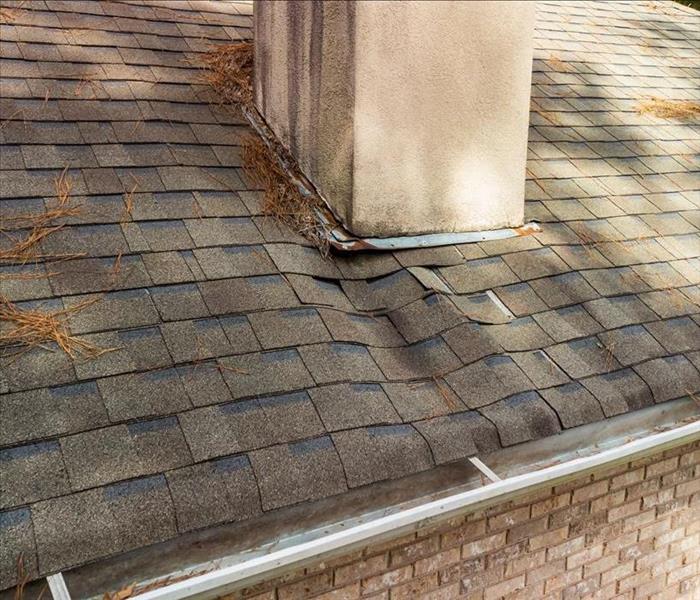 Home water damage always happens when least expected. SERVPRO of Lowell is Here to Help®. Don't hesitate to call us today!
Home water damage always happens when least expected. SERVPRO of Lowell is Here to Help®. Don't hesitate to call us today!
We certainly are no strangers to rain here in the Lowell community. We can experience rain during many months out of the year, so we can expect storm conditions to pop up here and there at any time.
While we can sometimes be grateful for a gentle, steady rain in the heat of the summer, heavy rain during intense thunderstorms can be troublesome and can leave you with serious water damage.
Catching a water leak early can minimize the damage, but stopping it entirely is always the best-case scenario. Use these tips below to help you avoid water damage when the next storm comes to town.
Preparing Your Home
Each storm brings its own threats and levels of intense rain, so being prepared for anything can help make sure you stay safe and dry no matter what is going on outside. Start with your gutters!
Cleaning out your gutters regularly will ensure water will flow down and away from your home without backing up onto your roof or pouring over the sides of your home. A single gutter clog can be responsible for significant damage to your home.
If you have a sump pump, having it inspected regularly will ensure that any issues or maintenance needs are taken care of quickly. Sump pumps are a great investment in your home and can keep your property from experiencing significant water damage, but only if they are in good working condition throughout the season.
Routine Inspections
One place in your home that we suggest to inspect routinely is your roof. Our roofs put up with a lot over the course of the year, so it is only natural for them to experience damage from time to time. A single gap or crack along your roof line can cause water to leak down your walls and cause significant water damage all over your home.
Grab a ladder and do a visual inspection of your roof at least once a month, especially after a strong storm passes through. Look for missing or broken shingles or visible hail damage and address these issues right away.
You should also do the same for your windows and doors. A single leak around one of these spaces can lead to water damage that travels throughout your home.
Where SERVPRO® Comes In
Even if you prepare as best you can and take these precautions, water can still be sneaky and leak into your home at any point during a storm. Call us right away so our team can get started on your repairs and water extraction process.
The longer water sits on your floors or lingers behind your walls, the greater the chance that your home will start to experience structural integrity issues or even mold growth.
Our team will tackle these issues head on and ensure your space is cleaned, dried and repaired as quickly as possible. We will make sure every soggy piece of drywall and every inch of your soaked carpet is replaced and restored to its preloss condition.
You deserve to recover quickly after suffering from water damage. Call SERVPRO of Lowell right away.
Spring Tips for Storm
3/22/2023 (Permalink)
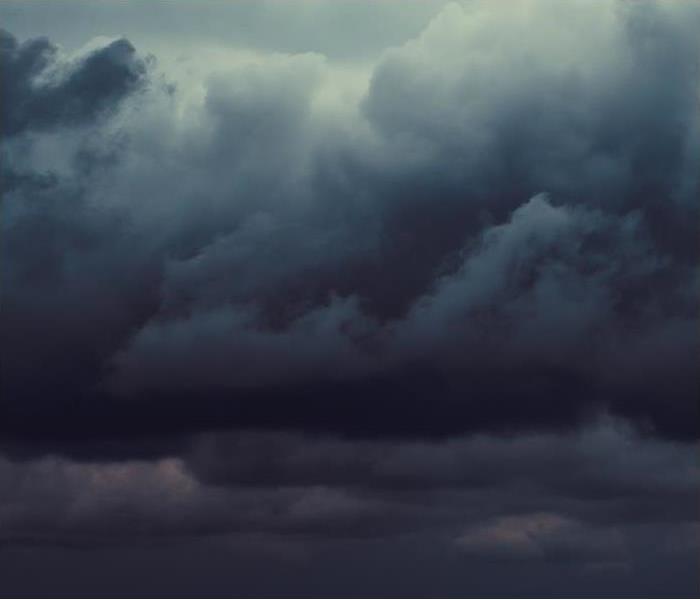 SERVPRO of Lowell team is always here for you, if you experience any storm damage call us right away.
SERVPRO of Lowell team is always here for you, if you experience any storm damage call us right away.
Spring is on the way, and we can’t wait to see a change in the weather. As you gear up for all of your outdoorsy spring activities, it’s a good idea to ready up your home at the same time.
Spring weather can bring a number of weather threats that can cause water damage if your Lowell home isn’t prepared!
While you write out your spring-cleaning list, make sure to complete a few of these vital outdoor chores around your property. We put together a few of the most important places you’ll need to maintain before spring has sprung.
Clean It OutAs winter comes to a close, it’s vital to maintain the parts if your home that might be dealing with a buildup of debris. Wind, rain, snow and ice can all lead to clogged gutters.
Leaves, twigs and other debris can clog up your gutters and downspouts, causing water to leak down onto your roof and into your home. Before spring arrives, ensure your downspouts, gutters and outdoor vents are all clear of blockages from excess debris.
Make sure to check your outdoor faucets for any leaks or gaps. It can get freezing cold here in Lowell during the winter, so there’s a good chance you might be dealing with frozen pipes. Checking these areas will ensure your pipes are good to go when the warm spring weather arrives.
Fix Issues FastWe typically don’t spend a lot of time outdoors when winter is in full swing. This can cause important issues on your roof or outside of your home to go unnoticed.
The heavy snow that visited our area this winter could’ve damaged your roof without your knowledge! Make sure any broken shingles, cracked gutters or other wear and tear are fixed before springtime.
Even the tiniest leaks and out-of-place shingles can result in a substantial water emergency when the first spring shower begins to pour. Checking these issues early on could save you from an even bigger problem in the future.
Get Ready for the WaterIf you have a sump pump in your home, you understand how critical it is that it works when spring arrives. A sump pump helps protect your basement and foundation from excess water, especially during rainy seasons like spring. Check that your sump pump is operational to avoid clogs or malfunctions when you begin using it.
Spring weather can change fast, so ensure your family is ready by updating your emergency kit, making any needed changes to your safety plan and finding more than one way to stay updated on local weather events.
Our crew at SERVPRO of Lowell knows that water damage can catch you off-guard, even when you work hard to prevent it. That’s why we are available 24⁄7 to respond to any of your water emergencies! We can be on the scene in a flash to begin restoring your Lowell home to its pre-water state.
Got water damage? We are here to help 24⁄7 and can restore your home quickly.
Keep Your Property Safe From the Dangers of Lightning
9/26/2022 (Permalink)
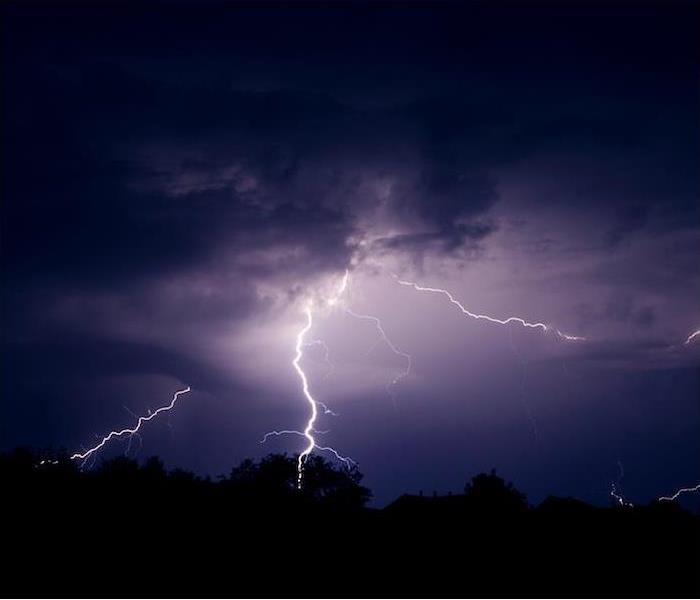 If you are dealing with smoke or fire damage from a recent fire, call SERVPRO of Lowell to learn about a restoration solution for your issue.
If you are dealing with smoke or fire damage from a recent fire, call SERVPRO of Lowell to learn about a restoration solution for your issue.
House fires can be disastrous, but when you follow safety measures, you can usually ensure the safety of yourself and your family. However, while many house fires have manmade causes and are preventable, natural causes are also capable of sparking unintended flames and much more difficult to prevent.
In 2020 alone, there were over 70,000 damage claims related to lightning strikes. Although being personally struck by lightning isn’t very common, your home is much more susceptible to damage. When lightning does strike, it can blow out your power, destroy trees or even ignite a fire.
It’s predicted that lightning strikes around 6,000 times per minute. This makes the risk of lightning even more significant and we should all make a point to keep ourselves safe when a storm is on the way.
What Is Lightning?Lightning is a huge, bright bolt of electrical current that occurs between the clouds and the ground. While thunderstorms produce lightning, they can also strike during volcanic eruptions, severe wildfires and even intense snowstorms.
We relate lightning to extreme weather, but it can also strike on a clear and dry day. “Dry lightning” is created without rain and is capable of sparking wildfires. This means we need to make room for fire safety while we prepare for the dangers of storms.
Protecting Your Home From Lightning FiresQuite a lot of destruction, including fires, can result from a lightning strike on your property. The heat of the impact itself or an electrical surge brought on by it can both spark a fire.
It’s possible that a fire that results from a strike won’t be immediately evident as it will typically start in a place like your walls or up in your attic. As soon as you discover your home has been struck, look for burn marks, and call the fire department as soon as you spot any black spots or detect any smoke.
One of the greatest methods for avoiding lightning-related fire is to install a lightning rod. This metal pole can deflect the force of a lightning strike away from your house so that it is not directly affected by the heat and electrical current.
When Lightning Strikes NearbyLightning is a leading cause of wildfires and other outdoor fires. Different parts of the country experience varying “peak” seasons for lightning fires, but an estimated 9,000 fires are sparked each year due to lightning strikes.
Maintain a tidy yard free of deceased or dying trees and plants, and think about utilizing defensible zones to shield your house from the impact of lightning strikes. To notify you as soon as a fire starts, your home should also include smoke detectors on every floor.
If your home suffers from damage after a fire, our team can be on the scene ASAP. Our team is trained to take care of fire damage of any size, no matter the source. With years of training and the use of advanced technologies, we can restore your home as fast as possible.
Have you experienced smoke or fire damage in your home? Call us today to finish the restoration quickly.
Storm Damage Versus Flood Damage
7/11/2022 (Permalink)
You may not think there is a huge difference between storm and flood damage, but your insurance company sure does. It's absolutely vital to make sure that your Lowell business is covered for both types of damage. Doing research on the ins and out of your insurance company can prevent you from spending thousands of dollars in property damages.
The Difference Defined
Differentiating between the two types of damages can be tricky.
Insurance companies typically label the accident as storm damage if the destruction was a result of one or more of the following:
- Heavy rainfall
- Cyclones and tornadoes
- Hail storms
- Hurricanes and other tropical storms
The Insurance Code of Practice defines flood damage as "the covering of normally dry land by water that has escaped or been released from the normal confines of any lake, river, creek or other natural watercourse, whether or not altered or modified, or any reservoir, canal or dam."
Even though it is obviously possible for the above storms to cause flooding in your building,your insurance company will not see it that way. While it is absolutely possible for the above incidents to cause flooding, your insurance company won't see it that way.
How to File a Claim
If your commercial building is covered, then you need to file your insurance claim as soon as possible by contacting your insurance company.
Separate your damaged and undamaged property and make a itemized list of both, including the items model number, serial number, and brand name. Do NOT throw anything away until your insurance company sends out an adjuster to inspect it. If you still have any receipts or bills, include them in the report.
Both severe storms and floods can cause massive amounts of water damage, but your insurance company still treats them like separate accidents. Make sure to contact remediation experts if your commercial building has recently suffered from storm or flood damage.
Contacting a professional restoration company such as SERVPRO of Lowell can do all the work for you. Our technicians will come in prepared with all the required insurance paperwork, will take photos of all salvageable and salvageable content, as well as all structural damage. We will create detailed itemized lists of all content for your adjuster and we will submit all information to your insurance and work with your adjuster.
Our technicians are on call 24/7 365 days a year- they can be called out on a moments notice if your business experienced flood or storm damage, because we know how precious time is when dealing with property damage. SERVPRO of Lowell 978-454-7577
Your Storm Safety Plan Needs These 3 Elements
6/1/2022 (Permalink)
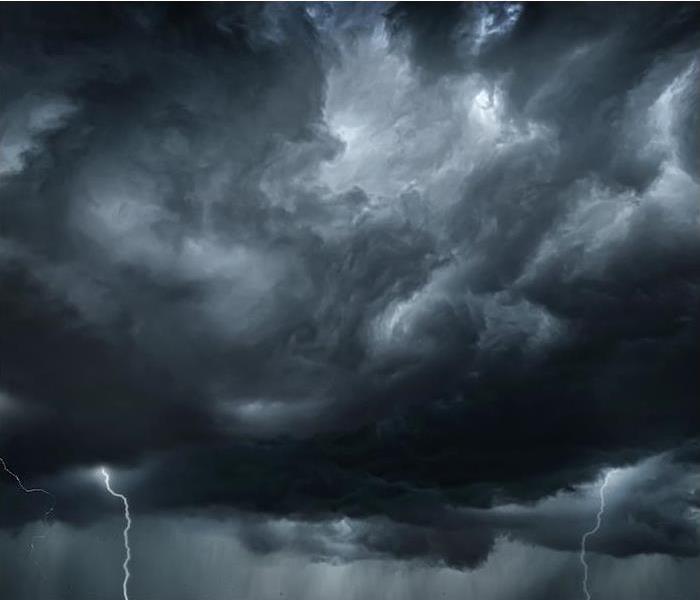 If you discover storm damage to your home or business, reach out to SERVPRO of Lowell right away.
If you discover storm damage to your home or business, reach out to SERVPRO of Lowell right away.
Nowhere in the United States is impervious to storms. You never know when a warm or cold front could kickstart a severe storm, bringing along lightning, heavy rain, hail and strong winds.
These weather events can cause serious damage to your home. Since there are around 100,000 thunderstorms throughout the United States every year, it’s likely you will encounter bad storms more than once.
Storms in Lowell often lead to some sort of flash flooding that could impact your home at any moment. In at-risk areas, you might experience flooded roads, downed trees and power lines, and flooded basements.
Even though you cannot prevent storms, you can prevent some of the negative effects by being prepared. You should have an emergency kit and a communications strategy ready to go in cause your household is caught in a severe storm.
Your Severe Weather Communication StrategyYou should have multiple modes of communication in case bad weather hits. First, you need to have a way to communicate with your household. You also need a cell phone and an NOAA weather radio so that you can stay up to date on all notifications. Know the difference between weather watches and warnings in case you hear these alerts from authorities.
Your household communication strategy should designate a safe area in your home, like a basement or bathroom, where everyone in the house can go if the weather turns bad.
You also need to come up with a way of contacting each other in case one or more people are away from the house during the storm. That way everyone knows when and how to check in and mark themselves as safe.
Your Severe Weather Emergency KitThe kit should include all the essentials your family members need for the next 72 hours. You may need to shelter in place if the storm is too bad.
This emergency kit should be kept in your home’s shelter area. In the kit, include nonperishable food, water, flashlights and batteries, first-aid supplies, and anything else your family might need to weather the storm.
Your Severe Weather Aftermath ChecklistOnce the bad weather has passed, there are still more steps to take, which include evaluating your safety plan and addressing any damage to your home. Of course, you should wait until it’s safe before checking your property for damage.
Let’s say you do encounter home damage. You need to know who to call. You want a reliable team of trained restoration experts like the ones you’ll find at SERVPRO of Lowell. You can take comfort in knowing we will get the job done right the first time around.
After all is said and done, make sure you round up your household and talk through the efficiency of your safety plan. You should figure out what worked well and what could be improved in case another sever storm rolls through in the future.
If you discover storm damage to your home or business, you can count on SERVPRO to handle the restoration. We’re here 24⁄7 to spring into action—get in touch with us today.
Spring Storms and Other Weather Events in the U.S.
3/4/2022 (Permalink)
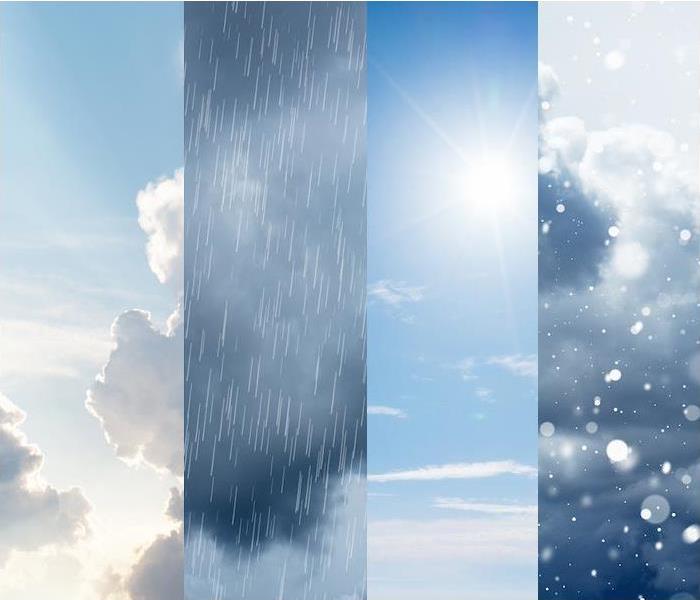 Extreme temperature changes can lead to the possibility of severe weather. SERVPRO of Lowell is a click away if you experience any damage.
Extreme temperature changes can lead to the possibility of severe weather. SERVPRO of Lowell is a click away if you experience any damage.
As one of the world’s biggest nations, the United States features a highly diverse climate across the board. As a consequence, seasonal weather in the United States is not one-size-fits-all—different parts of the country experience unique weather patterns, resulting in varying degrees of weather threats for different areas.
Let’s take a look at the weather patterns that may develop as spring approaches and warm and cold air masses mix throughout the country—as well as what we might expect here in Massachusetts.
The Pacific Northwest’s spring months are prone to severe rain, which may cause floods and water damage. Snow will continue to build at higher altitudes, and the resulting melting and runoff may cause issues of its own.
The Upper Midwest and Northeast, including our state, enjoy the longest winters and will have cold temperatures throughout the season. But that’s changing.
In Massachusetts and the Northeast, winters are projected to become warmer and reduce the average number of snowfalls from an average of five snowfalls to between one to three per month. By the end of the century, the number of severe precipitation occurrences is expected to more than double. From Maine to the Dakotas, folks can anticipate frigid weather, blizzards and heavy snow even until late spring or early summer.
The Southwest and southern West Coast, on the other hand, will need to be on the lookout for severe heat waves that may harm people and property. The South Pacific, including Hawaii, will be on high alert for the risk of tectonic activity-caused tsunamis.
Windstorms, derechos and the possibility of wildfires will also be on the radar for the central United States, from Iowa to Texas as they can spread quickly when winds are strong and conditions are dry. Tornado Alley, which is particularly prone to tornadoes, is found in this area.
Finally, we should anticipate a broad variety of severe weather occurrences in the Southeast, from thunderstorms and tornadoes in landlocked regions to early-season hurricanes along the coast later in the spring.
Extreme weather is a risk wherever you reside in the United States. While conditions differ by state, it never hurts to be aware of and prepared for extreme weather.
If extreme weather leaves you with damage from water, fire or other elements, help is a click away. Contact SERVPRO for fast, expert recovery.
It’s Time to Prepare for Winter Storms and Extreme Weather
11/23/2021 (Permalink)
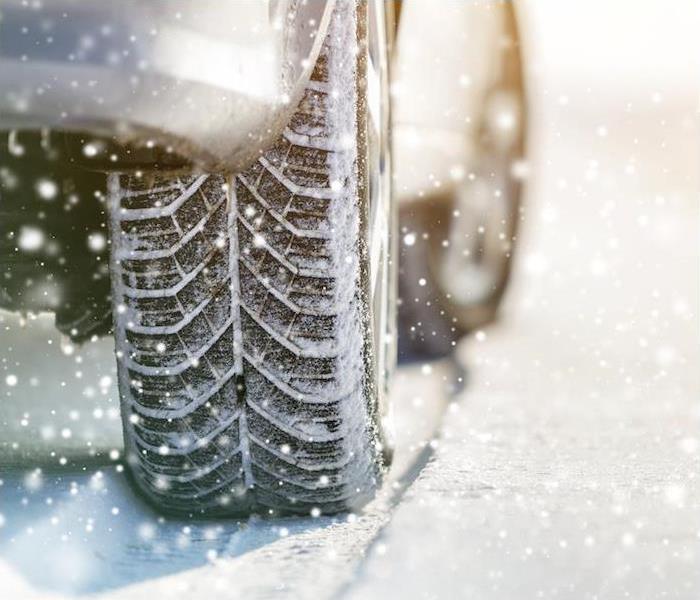 If winter weather should bring damage to your home or business, contact SERVPRO of Lowell for fast, restorative solutions
If winter weather should bring damage to your home or business, contact SERVPRO of Lowell for fast, restorative solutions
Lowell isn’t exactly Westeros, but make no mistake—winter is coming.
Some of you have been looking forward to this season since March, and others of you have been dreading it since the first leaf fell. But loving or hating winter won’t do anything to change the fact that living in Lowell means dealing with winter storms.
Protect Your FamilyIf winter weather gets heavy and hazardous, you’re going to be glad you’ve prepared an emergency action plan. Having a plan will help maintain your family’s safety in a potential crisis.
Vehicle prep is part of this preparation as well, as it may be time to rotate or replace tires, refill fluids and check the condition of your battery. You want to equip your car to be as reliable and safe as possible during the difficult cold of winter.
Make sure to keep emergency kits in the home and in the car, to help you if power is out or you get stuck on the road.
Protect Your HomeFrozen pipes are a difficult reality for cold-weather homeowners, and a real hassle if you have to deal with one. Let faucets drip when weather is bitter cold, and insulate pipes as you can, especially outdoor nozzles.
It’s time for a heat check as well. Examine your home’s HVAC units, and let a professional conduct any needed seasonal maintenance. Better to do it now, before the worst of things sets in and pushes your unit to the limit.
If you use wood-burning appliances for any heat, keep extra wood on-hand for times when getting out may be unsafe or you lose power. Always keep your fireplace clean of ash and soot, and handle any fire with care.
Protect Your PetsYour pets simply aren’t designed for the kind of cold we see here in Lowell. Bring them indoors for the colder months, and make a comfortable spot for them to call their own.
Keeping livestock outdoors, of course, is unavoidable, but you can help them by providing reliable shelter and a constant source of water—just don’t let it freeze.
Watch for Melts and FloodingAs heavy snows and built-up ice thaw, floods and ice dams can occur, causing trouble locally in waterways, or hyper-locally on your own roof.
Let local alerts and weather apps keep you abreast of any potential area hazards during winter months.
If winter weather should bring damage or flooding to your home or business, contact SERVPRO for fast, restorative solutions.
Understanding a Flood Cut
9/7/2021 (Permalink)
Unless you have experienced past house flooding in Lowell , MA or are an experienced home renovator, there is a good chance that you do not have the phrase “flood cut” in your vocabulary. For the typical homeowner, many questions come to mind when the water restoration specialist uses this expression after assessing the storm damage in your home.
What Does “Flood Cut” Mean?
• A flood cut refers to the removal of drywall from the bottom portion of the rooms in your home that experienced water damage.
• Typically, this cut is made between 12 – 18 inches above where the water damage stopped.
• The restoration specialists then tear out the drywall below the flood cut line.
When Is a Flood Cut Necessary?
• After flooding, the excess water is removed from your house. However, there may be moisture behind the walls and the drywall may be damaged. Removal of the bottom portion of the wall allows the contractors access to the interior structures of your home.
• If there is contamination in the water that touches the drywall, such as from sewage backup, all affected walls require removal to prevent the spread of bacteria.
• When insulation is present behind water-damaged walls, it is necessary to remove the drywall because insulation cannot be properly dried out or replaced with the wall intact.
How Does a Flood Cut Work?
• Restoration contractors begin the flood cut process soon after water removal to prevent the formation and spread of mold, which can occur within 24 – 48 hours.
• The flood cut line is measured and determined before a laser level marks the wall. A tarp is placed to catch the debris, and the cut is made.
• Once the restoration specialists inspect behind the drywall, another cut may be needed if the damage is larger than expected.
• Damaged materials are removed and adequate ventilation is put in place.
By knowing the meaning of “flood cut”, you are one step closer to understanding the terminology used in your home’s recovery from a water damage in Lowell, MA.
Take Summer Storms Seriously
8/18/2021 (Permalink)
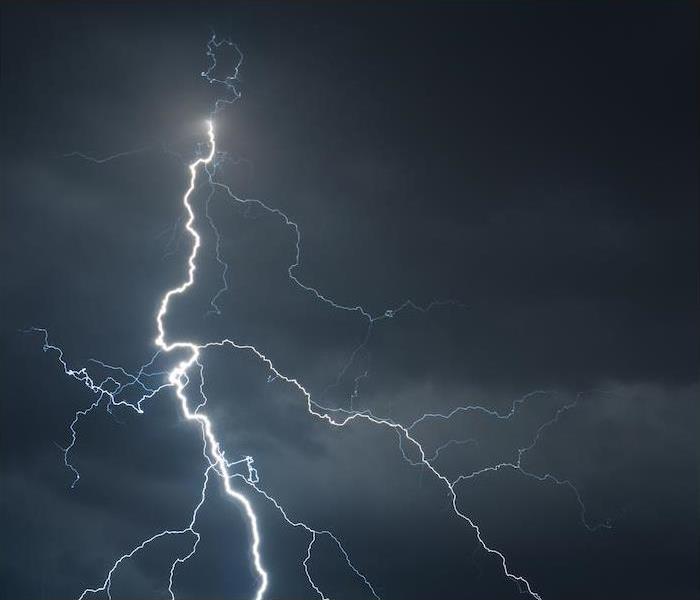 If a storm caused damage to your home or business, SERVPRO of Lowell is on the line, ready to make things right.
If a storm caused damage to your home or business, SERVPRO of Lowell is on the line, ready to make things right.
It’s summer in Lowell, and that means it’s time to get outside and be active. The days are longer, the weather is warmer—it’s a lovely time.
Maybe you’re heading to Boston to cheer on the Sox or planning a weekend hiking in the Lowell-Dracut-Tyngsboro State Forest. But whatever your plans, be sure to take your umbrella.
In spite of the sun and warmth (or more accurately, because of it), summertime is actually more likely to produce thunderstorms than other times of year. Though average rainfall is on the lower end during summer, it actually rains 28% of the time during those months, and the warm air clashing with moisture is more likely to result in thunderstorms.
Be Storm-Alert
Storm alerts mustn’t be ignored. If thunderstorms are in the forecast, you should pay attention and plan to plan around them. An NOAA Weather radio can provide a big assist as well, as it can provide helpful alerts and updates, even if a storm should knock out your power.
If local news predicts the possibility of flooding, you should consider rearranging travel plans or canceling planned events. And check the backyard—you may need to tie down patio furniture or secure garbage cans so they don’t get blown or washed away by the storm.
Storm prep isn’t as fun as watching J.D. Martinez crush baseballs, but it’s essential if you want to ensure your safety. Flooding and storm-related accidents cause a number of fatalities each year, and most of those deaths could have been prevented with some extra care or preparation.
Be Storm-Safe
You’re safest indoors during a storm, even after rain has stopped. Lighting can strike up to 10 miles from an active storm, so you’re not fully safe until the storm has moved on and you haven’t heard any peals of thunder for 30 minutes.
Indoor safety includes staying out of the shower or tub, as currents can travel through pipes and water—they can also shatter windows, so sit away from those as well.
How’s your emergency kit? If you don’t have one ready, get one ready before storms present a problem, and keep a mobile kit in the back of the car for evacuation situations.
If flooding does occur, avoid floodwater at all costs. It can wash away established roads and compromise others, it can carry off cars and cause hydroplaning, and coming in contact with it can make you ill.
There are any number of dangers that can come into play in a thunderstorm, and it’s always best to be cautious and put things on hold until storms safely pass. If storms cause damage to your home or business, SERVPRO is on the line, ready to make things right again.
Extreme Storms Lead a Record Year for Weather Disasters
7/9/2021 (Permalink)
2020 was a nightmarish year for many, and a distressing year for basically everyone. And it was deeper even than COVID-19: Not only did the year bring a deadly global pandemic and an extended quarantine across the country, it also broke prior high marks for extreme weather in the U.S.
In fact, 2020 saw more weather disasters than any previous year on record.
A weather event isn’t officially classified as a disaster until it causes a billion dollars in damages, and there were an astounding 22 of these events in 2020. And there were many others that caused plenty of damage without reaching that status—there were so many storms in the Atlantic, for example, that the National Weather Service exhausted its list of names for the year and had to name storms using Greek letters for just the second time in history.
Here in Lowell, we suffered one of these many storms, as Tropical Storm Isaias left more than 200,000 people in our area without power.
Not Just Hurricanes
Hurricanes are massive storms, and they are definitely common culprits of these billion-dollar disasters. But it turns out that the most expensive disasters of 2020 in the contiguous United States were thunderstorms and tornadoes: Almost two-thirds, 14 of 22, were storm systems.
It’s astonishing the damage even one thunderstorm can cause. In August, a typical-looking system intensified, becoming a destructive derecho (picture a tornado, but with straight-line winds instead of a cyclone shape). The massive storm hit over 10 million acres of Nebraska corn fields, putting almost 50% of the state’s precious corn crop in peril, and endangering over 11% of the entire country’s corn.
Not Just 2020
We can hope 2020 was a singularity, but truthfully, it seems to be following an unsettling trend: The previous two years joined together for damages totaling $136 billion, and 2017’s weather caused a record-high $300 billion in repair costs. In fact, each year since 2010 has suffered at least eight billion-dollar natural disasters in the U.S.
Storms are possible anytime, anywhere, and it’s important to take precautions against storm and water damage. But if those precautions should become insufficient in an extreme weather situation, remember that SERVPRO is always standing by with 24⁄7 emergency support.
When storms do damage, we go to work to make things right. Contact SERVPRO today to see how we can help.
Snow Storm In Lowell Mass
12/11/2020 (Permalink)
Lowell MA is no stranger to wind and ice, but snowstorms are a lot less frequent but not unheard of. Snowstorms can be beautiful to look at but the damage they cause to properties can be massive.
Snowstorms can cause damage to properties like roof collapse from a build-up of snow that puts extreme pressure and weight on week spots on roofs or ice dams which is a backup of ice that is formed in cold temperatures.
Our highly trained professionals use specialized equipment and advanced training to quickly restore your Lowell area property to pre-storm condition. We’re dedicated to responding immediately, no matter the time or the day. Our crews are ready 24/7, 365. Immediate action helps to minimize secondary damage from water being absorbed into more materials and affecting more of the property.
Keep animals safe in Winter Storms
12/11/2020 (Permalink)
Animal lovers want to be sure their pets are safe in storms. SERVPRO of Lowell brings these tips from the Red Cross and others to keep your four-legged friends happy and well.
Protect Your Pets from Winter storms:
- Sight and scent cues are harder to keep in the winter, so make sure your pets have tags, chips, or other identification
- More dogs are lost during the winter than any other season so do not let your dog’s off the leash in a storm
- If there is a storm or it is cold, keep the pets indoors
- Clean up antifreeze as it can be fatal to mammals that drink it
- Let your dogs' coats grow in the winter
- When your pets come in from winter weather, wipe off the paws, legs, and stomach to get rid of salt, ice, and dangerous chemicals
- Make sure that outdoor enclosures are insulated and away from the wind
- Do not let ice or snow drifts block access to shelter, food or water
- Older animals (like older people) are more sensitive to cold and damp than younger ones
- When you prepare your own emergency kit, prepare ones for the animals
- If you evacuate, bring pets because you don't know how long you will be gone
- Arrange for the safety of larger animals that can't come indoors
- Shelters have to allow service animals, but not pets
- Check ahead of time which shelters or motels allow pets
If storm damage hits your Lowell Area home, call SERVPRO of Lowell, MA 24/7. We will repair your home “Like it never even happened.”
Cleaning Up a Leaking Roof
12/1/2020 (Permalink)
What To Do When You Discover A Roof Leak?
A major storm in Lowell MA , did serious damage to many properties, including to the roof of your business. Suddenly, you need a roofing professional not only to fix the exterior but to repair your attic storage space and the ceilings in the upstairs offices. A roof leak may seem small, but it can result in lots of damage. Here's what to do once you've discovered a leak.
1. Check the Roof
If your building has a shingled roof, check for missing shingles. That may give you an idea of how water is getting in. If water is definitely coming through, puncture a small hole that will allow the water to flow out freely. If you leave it intact, water will spread over the ceiling which could cause the whole thing to sag and possibly collapse. A hole gives the water somewhere to go. Put a bucket underneath to catch the water and move furniture and other items out of the way.
2. Move Wet Items
Once belongings are wet, they need to be dried and disinfected. As long as there are no electrical dangers, launder furniture covers, bedding, and other washable items. Air out and clean furniture and rugs. Check for irreparable damage. If something is in poor condition, throw it away.
3. Dry Everything Well
From the attic on down, everything needs to be as dry as possible. Run fans or heaters or open windows to get air circulating through the area. Only once everything is completely dry can any restoration work for the roof leak begin.
4. Call a Restoration Company
A roof leak can cause substantial damage in hard-to-reach areas. Call a water damage restoration specialist to evaluate the safety of your building before you attempt any repairs yourself. It's important to have everything dry and disinfected to prevent future problems.
A damaged roof can cause extensive issues for your business. Cleaning up properly after storm damage ensures that you have a safe working environment for your company's future.
Here Are Some Steps To Protect Your Commercial Property
8/3/2020 (Permalink)
When most people think of flood damage, they are probably picturing storm damage from a hurricane or an overflowing river. However, flooding can occur almost anywhere and cause significant destruction to your property. Even if your business in Lowell MA, is not located in a high-risk flood zone, it could be wise to take steps to protect your commercial property.
Assess Your Risk
Assessing the perils unique to your business can be a good place to start. Answering these questions will help you pinpoint hazards you need to address:
- Is your business located in a high flood-risk area, such as a flood plain or a location that frequently experiences storm damage?
- Which parts of your valuable property are most endangered?
- Do your buildings have any structural vulnerabilities?
Prepare Your Basement
Basements of commercial properties are particularly vulnerable to flood damage due to the risk of water seeping in from the surrounding saturated ground. If you are storing anything of value in the basement, you may want to consider moving it to an area less prone to flooding, such as a higher floor. Other steps you can take to safeguard your basement include sealing up any leaks in the floor or walls, regrading your landscape to direct water away from your building, and installing a sump pump and drainage system.
Prepare the Rest of Your Property
Once you’ve got the basement squared away, turn your attention to the rest of your property. You may be able to reduce your potential for damage by inspecting and cleaning your gutters, sealing up any leaks, installing moisture detection systems, and using flood-resistant materials in any new construction or repair work. Addressing any standing water promptly after flooding can also help reduce future problems. A professional storm cleanup service may be helpful to evaluate the situation.
Flood damage can be a costly interruption to your business functions. By taking steps to protect your building and promptly address your flood cleanup needs, you may be able to significantly reduce the impact on your operations.
Professional Restoration Service After Flooding
7/21/2020 (Permalink)
Identifying Reputable Restoration Teams After New Haven Flooding
Flooding in Lowell homes can be overwhelming and leave many homeowners so fixated on fixing the immediate issues that they do not approach the situation with a clear mind. Many predatory companies can pop up amid natural disasters that we have seen in the area. As much as we can be a positive responder to these emergencies, we hope to keep our neighbors from befalling the unfortunate scam artists that appear after a storm.
Knowing how to identify reputable restoration teams from these fake companies is not always easy, especially when you are under the stress of flood damage in your Lowell MA home. There are a few key differences that should help these fraudulent restoration teams stand out against accredited professionals in the industry like our SERVPRO team.
Paying Upfront for Services
One of the most considerable red flags that should inform you that you are not speaking to a legitimate restoration company is the request to pay money upfront, even part of the final bill. Our company does not ask for money until the work gets finished, and this is discussed throughout the restoration process to keep everyone on the same page.
Unknown to Your Insurance
After flooding, many local insurance companies reach out to our team directly on behalf of their clients and properties because we are a recognized name in quality restoration. If your insurance company has not heard of the team you are considering, there is a chance they are not as renowned as they might pretend to be.
Undocumented
Accredited restoration teams like our SERVPRO team have a business license complete with insurance for the work that we do in homes throughout the area. After flooding, many things could happen to your home in even the earliest stages of restoration. Choosing an uninsured and unlicensed restoration team leaves you vulnerable to even greater financial disasters.
Flooding is a scenario that is more common than many homeowners might believe. When you need reputable and reliable service during an emergency, you can always count on our SERVPRO of Lowell professionals to help. Give us a call at 978-454-7577.
Damage from a Storm: Go Big and Go Green
7/21/2020 (Permalink)
If you have ever had a weather related emergency, such as a flood, tree fall, pipe burst you may have experienced the frustration of calling for help only to find you would be put on a list and gotten to when you’re gotten to. If you have not had a weather or event related issue at your home or business, good. If you ever do, here’s a few things to keep in mind: 1) Everyone you reach out to, whether a plumber, tree company or SERVPRO wants to help you and as quickly as possible. 2) When an area is affected, whether by a microburst, hurricane or deep freeze, the damage is common. In other words, if your pipes freeze when the temperature drops from 40 to seven over a 24 hour period, the same thing is happening all around you. 3) Immediate response resources in an area are always limited. Your plumber of 15 years can not hire additional crews overnight, as much as he would like to. So when this occurs, it pays to Go Big. At SERVPRO of Lowell, our first question is always: Is the source fixed or do you need help fixing the source? We work with a huge network of trades people and labor and can often recommend someone to help out. Once the source is fixed, our large trained staff supplemented by experienced labor and equipment sources from all over the tri-state area will be rolling. Whether its factory fire, burst water heater or a tree on a house, We are Ready for Whatever Happens.
Be Prepared For Any Challenges That A Storm Can Bring
11/18/2019 (Permalink)
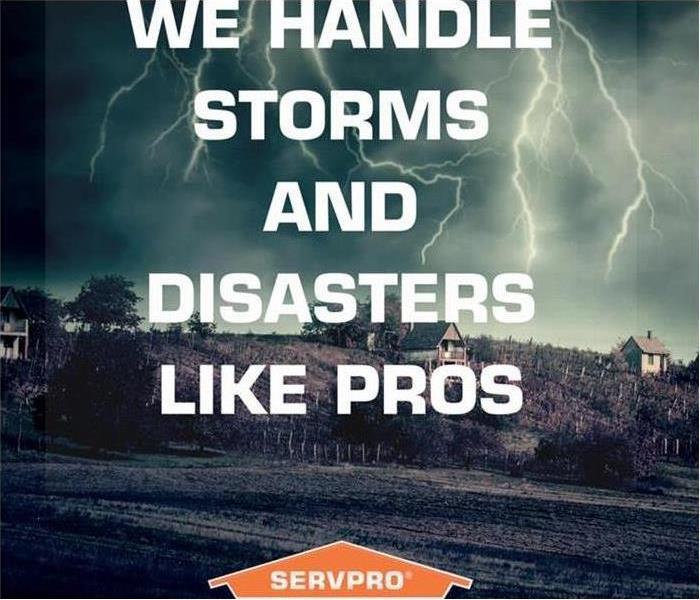 We Handle Any Type Of Storm That Might Happen.
We Handle Any Type Of Storm That Might Happen.
SERVPRO Works Fast to Remove Storm Water to Preserve the Integrity of Your Property
The word flood causes people to think of thunderstorms and bursting levees. Most of the restoration costs come from smaller water sources.
Much of the flood damage that SERVPRO finds within and nearly everywhere else results from failing plumbing and broken appliances. In winter months, poorly insulated pipes can freeze and burst, flooding basements, attics and other areas of the home.
Year-round, lines get blocked and rupture, old plumbing corrodes and fails as do clothing and dishwashers. While all this may seem like a small amount, a burst water pipe can send 160 gallons across a kitchen floor per hour. If this happens when a family is out for the weekend, they can come back to find over 5,700 gallons (36 hours) has flooded their entire home. Typically, this is clean water, which is not the case with intruding ground water from a storm.
To put things right; our response team starts with two tasks: an inspection to determine the extent of the flooding while technicians set up the first pump to begin removing the flood water. A quick check with a tape measure tells us the depth; if it is over two inches, we start a commercial grade pump to drain the water.
As this happens, a team inspector checks the other areas of the house to see how much water is present and if there is ancillary damage such as water in the electrical outlets. It is not a regular occurrence, but it can happen in basements or split-level homes. More common are flooded carpets, walls, ceilings, and floors with possible damage to other structural property.
Once we finish with the pumps, the next steps are to remove water trapped in the carpets and floors and to dry or replace damaged drywall. We use extractor wands to draw water out of carpets and wood floors without damaging the nape or surface. In most cases, we throw out the carpet pad, as it is too expensive to dry out something that cheaply can be replaced. Once again, if surging water from the exterior transported debris, the contaminated padding must be tossed.
To prevent removing drywall, we try to dry it in place if it is not too soaked. SERVPRO IICRC trained technicians set up dehumidifiers to remove moisture from the air, install exhaust fans to pull damp air out of the affected rooms, and place air movers along the affected panels to force heated, dry air across the surfaces to carefully lower the moisture content. We may also drill small holes into the baseboard area and close to the ceiling joints to increase air flow and the rate of evaporation. This further mitigates the loss.
These are just a few of the actions we take to return your home to its normal, pre-flood state, "Like it never even happened." If you need our help to dry out your home and property, call SERVPRO of Lowell Today at (978)-454-7577. We are here and ready for you.
Storm Damage Happens Quick
11/13/2019 (Permalink)
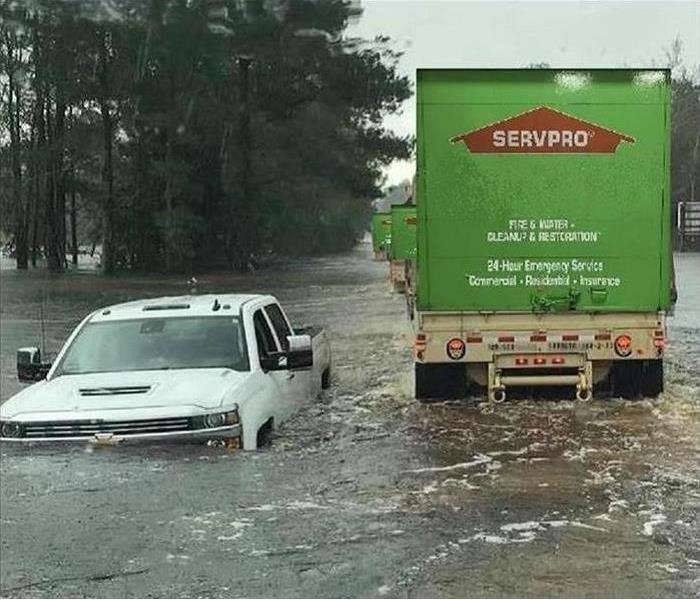 We will do our best to get to you in any weather
We will do our best to get to you in any weather
We’re dedicated to responding immediately to water and storm damage emergencies. A fast response lessens the damage, limits further damage, and reduces cost. Storms and floods can strike any hour of the day or night. That's why we at SERVPRO are here to respond to your emergency 24/7. Locally owned and operated, we will immediately take action to help preserve as much of your valuable property as possible and help to avoid further damage and cleanup costs. Within minutes of flooding, water can spread throughout your entire property and quickly saturate floors, walls and furniture upholstery. Wood finishes on furniture can seep into the carpets and other floor coverings, permanently staining them. In addition, any paper or books can begin to swell and warp. Within just one day, the drywall can start to swell and break, metal can begin to tarnish and musty odors will become noticeable. When your property suffers storm or flood damage, you immediately need a highly-trained professional to respond to the disaster. Fast cleanup is essential to minimize the threat of further damage.
Help After A Storm Strikes
11/5/2019 (Permalink)
 Winter Storms On The Way.
Winter Storms On The Way.
Being prepared for severe weather is just part of living in New England. Part of living in New England is accepting the fact that hurricanes, severe thunderstorms, snow storms and heavy rains may result in water and flood damage.
If you are experiencing any kind of water damage from a storm, SERVPRO will help you get your home or business back to normal after the devastating water deluge has occurred. It is important that damage from the water is taken care of immediately to minimize losses to your home or business.
When it comes to the type of flooding we experience here in New England, the best option is professional water removal and cleanup for safety and proper restoration. SERVPRO's highly trained technicians are consummate professionals who are IICRC certified and practice the best methods in cleaning and restoration services. One of the most important parts of preparedness is knowing who to call when you have storm damage, Call SERVPRO of Lowell at (978) 454-7577.
Flood Damage Restoration and Cleanup Services
Our trained technicians will arrive at your residence or commercial business and assess the flood damage and needs that your structure will require. From water damaged furniture, flooring, walls, and damage as a result of flooding, we do it all.
SERVPRO’s Residential and Commercial-Grade Services include:
• Water Removal
• Water and Storm Damage Restoration
• Mold Remediation if necessary
• Cleaning Services
• Building Services including rebuilds and reconstruction with affiliated partners
Lowell Community: Are you aware of the Wireless Emergency Alerts?
7/19/2019 (Permalink)
Lowell Residents:
Learn how to be prepared and gain precious time when major weather events bear down on our area...especially if yo work outside the Lowell Community and plan to return home that evening...possibly picking up your children before returning home. Please refer to the attached article from Mass.gov to help your planning!
Receive emergency alerts and weather warnings with Massachusetts Alerts, Wireless Emergency Alerts, Emergency Alert System and other systems.
Receiving advance warnings for severe weather, timely emergency alerts, and information during a disaster is critical to staying safe during an emergency. Every family should have multiple methods for receiving emergency alerts, including at least one with an audible alert to wake you in the middle of the night.
Massachusetts Alerts Smartphone App
The free Massachusetts Alerts app provides emergency notifications and public safety information from the Massachusetts Emergency Management Agency and the National Weather Service based on your location, proximity to an event or incident, and the preferences you select.
MEMA encourages all residents of the Commonwealth to download Massachusetts Alerts which is available for Android and iPhone devices.
Emergency Alert System (EAS)
The Emergency Alert System (EAS) is a national warning system that uses radio, television, and satellite channels to broadcast important public safety information during times of emergency. When an EAS is issued, you will hear a tone followed by an audio message. Participating television broadcasters will also display a visual message, which might take the form of a scrolling banner or a static slide.
This system can be used by state authorities to deliver emergency information, such as America’s Missing: Broadcast Emergency Response (AMBER) alerts and severe weather warnings.
MEMA, under the Federal Emergency Management Agency (FEMA)’s Integrated Public Alert and Warning System (IPAWS), has the authority to activate EAS and Wireless Emergency Alerts (WEA) on behalf of the Governor of Massachusetts, Director of MEMA, Massachusetts State Police (MSP), and National Weather Service (NWS).
Wireless Emergency Alerts (WEA)
The Wireless Emergency Alerts (WEA) program is part of the EAS national alerting initiative, which enables cellphones to receive alerts for severe weather emergencies, imminent threats to life or property, AMBER alerts, and Presidential alerts.
Most WEAs are issued by the National Weather Service (NWS). These alerts are only used for the most imminent and severe weather conditions, which includes tornadoes, flash floods, hurricanes, and tsunamis.
MEMA can also issue a WEA for other imminent threats that meet the requirements set forth by the Federal Communications Commission (FCC) that were designed to ensure that only the most urgent public-safety messages are sent as a WEA.
The alerts are delivered on technology that overrides any wireless network congestion and delays and allows the information to target cellphones within the impact area. A WEA alerts users with a special tone and vibration. If you receive a WEA, you should follow the protective actions advised in the message.
You do not need to subscribe to any service to receive alerts. The alerts are sent to all WEA-enabled devices in the impacted region. To find out whether you have a WEA-enabled phone, you should contact your mobile carrier.
More information about WEA (including links to cellphone carrier) is available on the CTIA website. For answers to frequently asked questions about this tool, see FEMA’s Ready.gov website, the FCC website, or the National Weather Service website.
NOAA Weather Radio
A NOAA weather radio provides alerts for weather warnings in your area. With batteries, a radio can work even when the power is out and can be programmed to provide alerts within your local area. Weather radios are a reliable source for severe weather announcements or weather-related emergency information.
Social Media & Traditional Media
MEMA uses Twitter (@MassEMA) and Facebook to provide preparedness tips as well as information about severe weather, emergency situations, and disasters. MEMA also uses social media as a secondary method of alerting.
Traditional local media outlets (such as TV and radio stations) are another source for emergency alerts and information.
2-1-1 Hotline
2-1-1 is the Commonwealth’s primary telephone information call center. Call 2-1-1 for information about the location of open shelters, transportation or other restrictions due to a declared state of emergency, post disaster assistance, ways to volunteer or donate, or other services you or your family may need. Mass 2-1-1 is a 24/7 resource to connect callers to information about critical health and human services programs.
Local Notification Systems
MEMA urges residents to contact their local Emergency Management Director to find out whether their community uses its own alert and warning system, such as Reverse 911 or Code Red for important local information. Your local official will be able to direct you how to enroll in these notification systems.
Residents can also check if their local public safety agencies (police, fire, emergency management) have social media accounts and if so follow them for local emergency information.
Other Systems
- Outdoor sirens, which are used to alert residents within the nuclear emergency planning zones (EPZs) for Pilgrim Nuclear Power Station and Seabrook Station of any nuclear related incidents.
- A teletypewriter (TTY) device, which allows individuals who are deaf, hard of hearing, or speech-impaired use the telephone to communicate.
- U.S. Coast Guard Marine Safety Broadcasts are used for maritime weather and safety broadcasts.
- MassDOT variable message boards and private sector digital billboards can be used to provide information during emergencies.
Understand the Differences Between Weather Alerts
The National Weather Service issues watches and warnings to alert the public of potentially dangerous weather. It is important to understand the difference between watches and warnings so you know what to do to stay safe.
- A watch means that the weather conditions are favorable for dangerous weather. If a watch is issued, then you should be alert to changing weather conditions.
- A warning means that severe weather is already occurring, or is likely to occur, and that you should take protective actions to stay safe.
Prepare for All Types of Hazards
Residents can be impacted by a range of severe weather, natural hazards, and man-made threats — Learn about the types of emergencies that are likely to impact Massachusetts and how to prepare for and respond to them: https://www.mass.gov/types-of-emergencies-and-disasters
Remember when your home or business does experience storm events, call the professionals at SERVPRO of Lowell for help! 1-978-454-7577.
Lowell Community: Flood Safety Tips and Resources Weather.gov > Safety > Flood Safety Tips and Resources
7/12/2019 (Permalink)
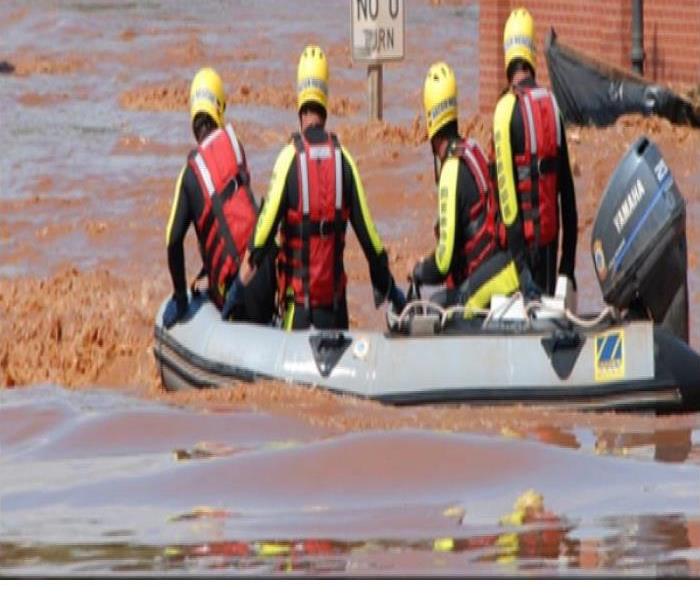 Turn Around Don't Drown at Flooded Roads
Know What to do Before, During and After a Flood
Turn Around Don't Drown at Flooded Roads
Know What to do Before, During and After a Flood
Weather.gov > Safety > Flood Safety Tips and Resources
Flooding is a coast-to-coast threat to some part of the United States and its territories nearly every day of the year. This site is designed to teach you how to stay safe in a flood event. If you know what to do before, during, and after a flood you can increase your chances of survival and better protect your property. For instance, it is vital to know what to do if you are driving and hit a flooded road. Here you will find an interactive flood map, information describing the different types of flooding and educational material. You will also learn how the National Weather Service keeps you aware of potentially dangerous flooding situations through alerts and warnings.
Learn how to better protect yourself and your family by reading our flood survivor stories. If you, or someone you know, have been a victim of a flood, please share your story so we can prevent others from becoming a victim. When you write, please note that NWS has permission to use your story and, if possible, let us know the town and state you were in and the year the event took place.
SOUTH LOWELL: Call SERVPRO of Lowell to handle any storms that Mother Nature sends our way!
6/6/2019 (Permalink)
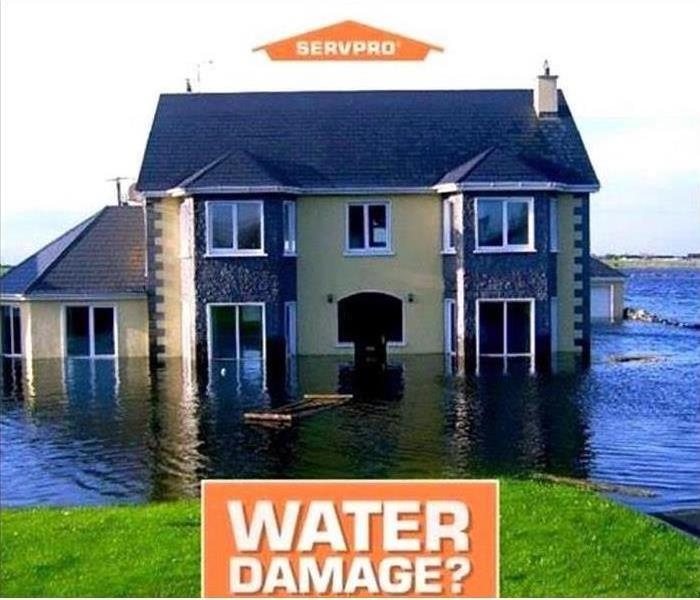 Call SERVPRO of Lowell 978-454-7577, where you will always reach a SERVPRO of Lowell team member every time!
Call SERVPRO of Lowell 978-454-7577, where you will always reach a SERVPRO of Lowell team member every time!
Mother Nature send a STORM our way?
SERVPRO of Lowell has the resources to handle floods and storms!
When storms hit South Lowell, The Acre, Pawtucketville ot Lowell proper, SERVPRO of Lowell is prepared to scale our resources to handle it all! Thanks to our SERVPRO Industries connection as a locally owned and operated franchise, we have access to SERVPRO's Elite Disaster Recovery Teams strategically located throughout the United States.
From flooding to flooded basements to water line breaks to failed sump pumps, we can handle your storm emergency!
When Mother Nature sends storms our way, call SERVPRO of Lowell at 978-454-7577.
https://www.SERVPROlowell.com/contact/contactus
The best part: your call will be answered by a team member ready to assist you!
Faster Response
11/5/2018 (Permalink)
SERVPRO of Lowell specializes in storm and flood damage restoration. Our highly trained technicians bring the knowledge required to handle your commercial manmade or natural disaster we use specialized equipment to restore your property to its pre-storm condition.
Faster Response
We are locally owned and operated able to respond quicker with the right resources, which is extremely important. A fast response lessens the damage, limits secondary damage, reduces business interruption and allows your employees to meet your company’s deadlines.
Resources to Handle Floods and Storms
When storms hit Lowell, we are prepared to scale our resources to handle a large storm or flooding disaster. Our access to equipment and personnel from a network Franchises across the country. Elite Disaster Recovery Teams that are strategically located throughout the United States.
Have Storm or Flood Damage? Calling (978)454-7577 24/7/365 you will be connected directly no answering service with a team member ready to assist with any size disaster.
Ready to make it “Like it never even happened”
 Home water damage always happens when least expected. SERVPRO of Lowell is Here to Help®. Don't hesitate to call us today!
Home water damage always happens when least expected. SERVPRO of Lowell is Here to Help®. Don't hesitate to call us today!

 24/7 Emergency Service
24/7 Emergency Service












